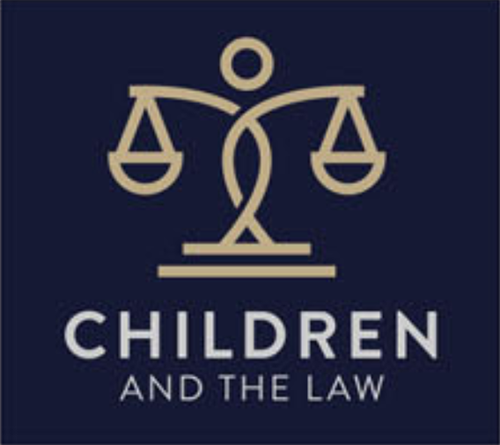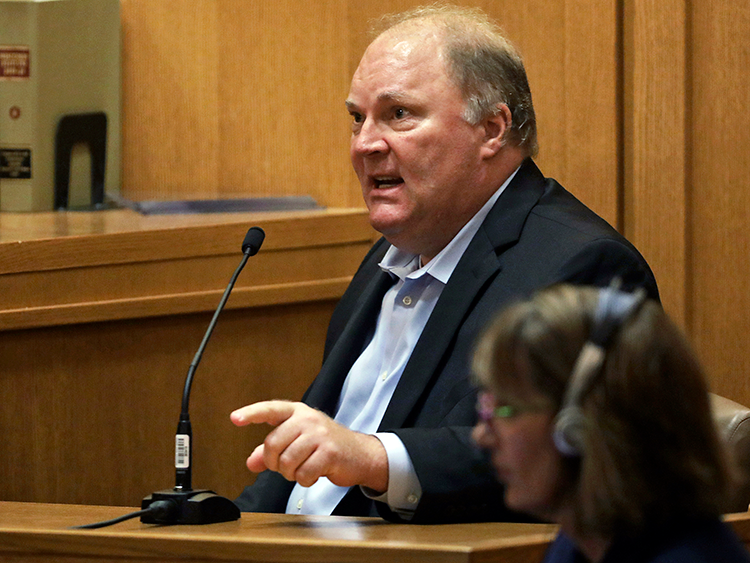Advocates support use of kinship caregivers in child welfare cases

Laurie Tapozada’s grandson was 8 months old when his mother, Destany, left their house to go shopping and didn’t come back.
Tapozada called Destany several times that evening and the next morning and knew something was wrong when she didn’t answer. Destany, who Tapozada had adopted as a teenager, had experienced severe neglect and abuse and had been hospitalized for anxiety and other mental health issues before becoming pregnant at 19. The Rhode Island Department of Children, Youth & Families knew about Destany’s complex medical history and opened an investigation into her after her son’s birth.
Because of the investigation, Destany and her son lived with Tapozada, who helped care for the baby but never thought Destany would purposely leave him. Tapozada eventually called the police and her daughter’s caseworker, who planned to pick up her grandson unless she could keep him.
At the time, Tapozada had a high-pressure consulting job. She wanted to move to Florida. She was in her 50s and had already raised four children.
“All of these thoughts were racing through my head, like, ‘There’s no way I can do this,’” Tapozada says. “But the words I said were, ‘Of course I’ll take him.’”
Tapozada didn’t know any other grandparents, relatives or close family friends who stepped in to raise children—people otherwise known as kinship caregivers. Such arrangements arise when a child welfare agency asks them—either formally or informally—to become foster parents. (See “Shadow Foster Care,” August-September 2023, page 44.) They can also happen when people volunteer to care for children without any involvement by child welfare.
When Destany finally returned Tapozada’s calls, she said she just needed a break. But over the next few months, her daughter couldn’t secure stable housing or a job. Destany asked Tapozada to adopt her son before his second birthday in 2016.
Tapozada, who is single, realized she would have little support. But she still agreed.
“There was no community,” Tapozada says. “When it first happens, you’re just in shock and trying to deal with these crushing emergencies. And I hadn’t taken care of a baby for a great number of years. Everything was different.”
Evolution of kin-first culture
Child welfare advocates are bringing more attention to kinship caregivers like Tapozada and the important role they play in children’s lives.
In 2021, nearly 392,000 children were living in foster care in the United States, according to the Annie E. Casey Foundation, which tracks data on child well-being. While about 44% of these children were placed with nonrelative foster families, placements with relatives increased from 25% to 35% between 2000 and 2021.
Even higher numbers of children are estimated to be with kinship caregivers in informal arrangements without state oversight. According to 2021 data from nonprofit Generations United, for every child raised by kin in foster care, 18 children are raised by kin outside of foster care.
Federal law requires states to “consider giving preference to an adult relative over a nonrelated caregiver when determining a placement for a child.” Extensive research also shows many benefits to placing children with kinship caregivers if they are available. These include minimizing the trauma of family separation, increasing placement stability and improving behavioral outcomes.
Advocates cite many other reasons for the increase in relative placements, such as growing support for kinship navigator programs and services for kin families and dwindling numbers of nonrelative foster homes around the country.
“Kinship care can be a really wonderful solution to some of the problems that child welfare grapples with and could potentially keep children from entering care all together,” says Heidi Redlich Epstein, director of kinship policy at the ABA Center on Children and the Law. “And it’s not just about placement. Kinship care also means keeping a child connected to their family and culture.”
In 2017, the Center on Children and the Law partnered with several states and organizations, including Generations United, to develop an online guide to creating a “kin-first culture” in the child welfare system. It outlines seven steps, including engaging kin at every stage, making the first placement a kin placement and prioritizing licensing and financially supporting kin.
Ana Beltran, the director of Generations United’s Grandfamilies & Kinship Support Network, helped the ABA implement these steps in Virginia and a few other jurisdictions. She says more states are following their lead and working with kinship caregivers.
“In recent years, we’ve definitely seen more of a push,” Beltran says. “More and more state child welfare agencies are seeing the value.”
Strategic approaches
For Tapozada, learning about the Village— a Rhode Island organization that offers support groups for foster, adoptive and kinship families— was a turning point.
She left her job and began working with the Rhode Island Department of Children, Youth and Families to develop kinship care initiatives, among them a kinship peer mentor program. She also helped establish a Rhode Island kinship advisory council.
“My life changed for the better because I became connected with other families like mine,” says Tapozada. She still talks regularly with Destany, who declined to be interviewed for this story. Her grandson, who is now 8, is doing well and loves video games and playing outside with friends.
In November, the Center on Children and the Law and its partners released a brief that summarizes promising kinship practices. Its goal was to inspire more jurisdictions to better support kinship caregivers nationwide.
“What we try to do when we’re working with states is bring in a perspective of, ‘Oh, hey, this is working in New Mexico. Why don’t you try that?’” says Redlich Epstein, who also helped develop the Grandfamilies State Law and Policy Center. “‘Or we hear this state’s doing this great thing, how about looking at that?’”
According to the brief:
• New Mexico has a dedicated kinship unit, which supports family search and engagement efforts. It also helps kin navigate the placement and licensing process and understand permanency options.
• New York similarly requires counties to have “kin champions” and implemented a “firewall policy” that urges supervisors to review efforts to place children with kinship caregivers before they are taken elsewhere.
• Pennsylvania uses data to encourage a kin-first culture and works with nonprofits that provide training and other services to kinship caregivers.
Shara Saveikis became the executive director of the Westmoreland County Children’s Bureau in Pennsylvania in 2007. She remembers “a very strong, negative attitude” toward kinship caregivers.
“Everybody had the belief of, ‘The apple doesn’t fall far from the tree,’” she says. “And it was deep-seated in our county.”
Saveikis worked with the Center on Children and the Law, built community partnerships and developed kin-specific policies. She also encouraged tracking placements and can show that 42% are now with kinship caregivers, compared to about 9% 15 years ago.
“Finding kin and engaging them, it’s a lot for a caseworker to do,” she says. “But creating an infrastructure to support that and highlighting the positive outcomes for the child and the family really helps.”
Changes to come?
In February, the Administration for Children and Families proposed a new regulation urging child welfare agencies to develop different standards for kinship caregivers, such as allowing kin children to share bedrooms. Once licensed, they would receive the same financial assistance as nonrelative foster parents.
Redlich Epstein welcomes the federal rule change, which she says could positively impact thousands of children in foster care and their kinship caregivers.
“This change will encourage placement with kin as the presumptive first and hopefully only placement for all children while also working to eliminate standards that negatively impact Black, Indigenous and rural families,” she says.
The ABA and its partners are now working to create new, kin-specific licensing recommendations, Redlich Epstein says.
Advocates also hope more kinship caregivers receive legal representation. The Atlanta Legal Aid Society, which connects caregivers with pro bono attorneys, is one organization already involved in this work.
Tapozada agrees this is an urgent need, as many kinship caregivers can’t afford a lawyer but struggle to understand foster care requirements or guardianship and adoption.
“I would love to find a way to get kinship families that access,” she says.
This story is part of the ABA Journal’s Children & the Law series exploring children’s law and juvenile justice.
Related article: Shadow Foster Care: Children and caregivers in a ‘hidden’ system miss out on benefits and support



